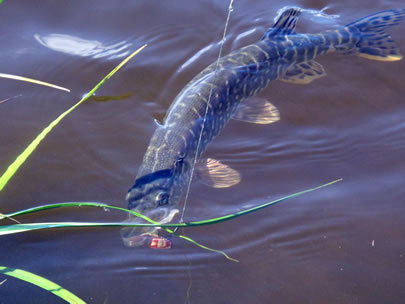

They hunt slowly through an area or simply lie in wait until they are close to a target. Their slender body allows them to slip easily among the weed stems. They are perfectly camouflaged in the weed beds. Northern pike are carnivorous sight feeders and they ambush their prey. The northern pike’s preferred habitat and its eating habits.ĭuring most of the year, northern pike prefer lake margins or slow moving water where they hide among weeds or rocky areas. Why not? It essentially comes down to two things.

Where they are native they are mainly enjoyed where they are introduced, they are not. Therein lies the problem with northern pike. Northern pike were accidentally or purposefully introduced into the Susitna River drainage and several lakes in the Anchorage area and the Kenai Peninsula. Northern pike occur naturally throughout most of Canada and the northern tier of United States, as well as much of the northern hemisphere, including Russia and Europe. Northerns are native to most of our state but not Southcentral and Southeastern Alaska. In Alaska, the northern pike is a fish that is appreciated by some people and unwanted by others. Pike are both voracious and utterly fearless. They are sometimes known by the literal translation of their Latin name, e sox lucius, or, water wolf. The pike family includes the muskellunge, which grows to a larger size than the northern pike, and the redfin pickerel (which rarely exceeds ten or twelve inches in length). Nowhere does this association come with such mixed connotations as it does with the northern pike family. It's been said that you can choose your friends, but you're stuck with your relatives.


 0 kommentar(er)
0 kommentar(er)
